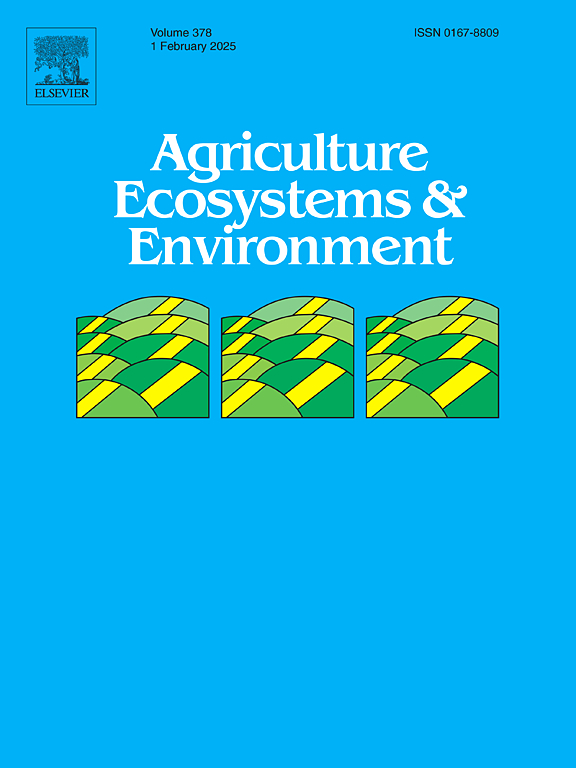Integrating straw return and tillage practices to enhance soil organic carbon sequestration in wheat–maize rotation systems in the North China Plain
IF 6
1区 农林科学
Q1 AGRICULTURE, MULTIDISCIPLINARY
引用次数: 0
Abstract
Straw return is a crucial strategy for enhancing soil organic carbon (SOC) sequestration in winter wheat–summer maize rotation systems in the North China Plain. However, the effects of straw return combined with different tillage practices on SOC sequestration under different environmental and management conditions across the soil profile remain unclear. A meta-analysis was conducted based on 2525 pairs of observations to investigate the effects of straw return combined with no tillage (NT), reduced tillage (RT), and conventional tillage (CT) on SOC content in wheat–maize rotation systems in the North China Plain. The results indicated that, compared with straw removal, straw return with NT and RT significantly increased the SOC content in the 0–40 cm layer, which was attributed to reduced soil disturbance and promoted SOC surface accumulation. The largest increase was observed in the 0–20 cm layer under NT (12.7 %) and in the 20–40 cm layer under RT (12.7 %). CT showed the greatest increase in SOC content below 40 cm (10.0 %), and RT did not affect SOC below the 40 cm layer relative to CT because deep tillage increased inputs of straw C and transferred topsoil with higher SOC to the subsoil layer. Mean annual precipitation, initial SOC content, and straw quantity were the major drivers regulating the response of SOC sequestration to straw return. Specifically, regions with mean annual temperatures above 15℃ and precipitation over 700 mm had a greater increase in SOC under straw return. Straw return under NT and RT led to the largest increase in SOC content when initial SOC was between 5 and 10 g kg−1 or with a straw return duration of 16–20 years. Straw return under CT showed the greatest increase when initial SOC exceeded 10 g kg−1 or with a straw return duration of 6–10 years. SOC content reached the highest level under RT and CT with a straw quantity of 10–15 t ha−1 and under NT with a straw quantity of less than 10 t ha−1. Structural equation modeling showed that climatic conditions were positively correlated with the response of SOC to straw return and that soil properties and management practices exhibited a negative correlation. The effects of straw return combined with different tillage practices on the C footprint of agricultural systems should be explored in further research.
求助全文
约1分钟内获得全文
求助全文
来源期刊

Agriculture, Ecosystems & Environment
环境科学-环境科学
CiteScore
11.70
自引率
9.10%
发文量
392
审稿时长
26 days
期刊介绍:
Agriculture, Ecosystems and Environment publishes scientific articles dealing with the interface between agroecosystems and the natural environment, specifically how agriculture influences the environment and how changes in that environment impact agroecosystems. Preference is given to papers from experimental and observational research at the field, system or landscape level, from studies that enhance our understanding of processes using data-based biophysical modelling, and papers that bridge scientific disciplines and integrate knowledge. All papers should be placed in an international or wide comparative context.
 求助内容:
求助内容: 应助结果提醒方式:
应助结果提醒方式:


